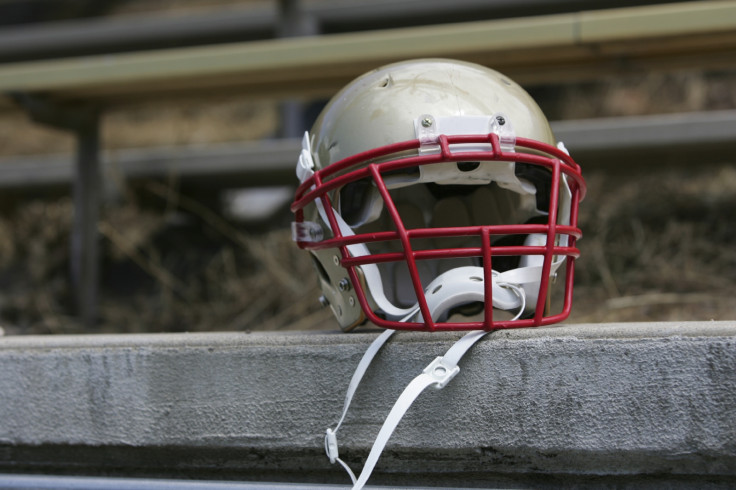US scientists invent football helmet material that changes colour to detect concussions faster

Scientists from the University of Pennsylvania (Penn) have invented a colour-changing helmet material that could help to detect concussions and brain trauma much more effectively. The material is a self-assembling polymer made from photonic crystals that changes to different colours depending on the speed and the amount of force that hits it.
When the material is hit by 30 milliNewtons of force – equivalent to a car hitting a brick wall at 80mph – the material turns from red to green, while a force of 90 milliNewtons – equivalent to a truck running into a wall at 80mph – causes it to turn purple.
Professor Shu Yang, of Penn's Department of Materials Science and Engineering, is leading the research and says the force range technique can be used to measure traumatic brain injuries ranging from a concussion up to the damage caused by a bomb blast.
Medical practitioners would be able to quickly judge the severity of an athlete or first responder's injuries simply by looking at the colour of their helmet and prevent the patient's condition from getting worse.
Yang and her team are to present their research at the 250th National Meeting & Exposition of the American Chemical Society (ACS), which started on 16 August in Boston and runs until 20 August.
Admitting the danger of repeated concussions
It has taken several decades for the National Football League (NFL) in the US to admit repeated head injuries sustained during the careers of American football players have long-lasting effects, and the tide only turned after the death of "Iron Mike" Webster, one of the most celebrated centre players.
After retiring from the NFL, Webster suffered from amnesia, depression and dementia, and his quality of life rapidly decreased. Much to the surprise and dismay of his fans, friends and former teammates, he began living rough out of his truck and in train stations, and eventually his wife divorced him.

In 2002, he died of undisclosed causes at the age of 50, and a post-mortem performed by forensic neuropathologist Bennet Omalu found Webster, together with eight other ex-NFL football players, had the sort of brain damage only previously seen in patients suffering from Alzheimer's disease and dementia.
The only related sports injury with similar brain damage had been seen in retired boxers. Omalu diagnosed Webster as having a new type of neurodegenerative disease, which he named Chronic Traumatic Encephalopathy (CTE).
The forensic neuropathologist was criticised by the NFL, which tried to discredit him in the media and malign his reputation. It also demanded that scientific journal Neurosurgery retract the paper it published of his findings in 2005.
Eventually, Omalu received legal help from lawyer Jason Luckasevic, and after eight years of legal battles, the NFL finally settled a lawsuit brought by over 5,000 former players in April and agreed to pay $1bn (£640m), although some ex-players are still appealing.
Working to make American football a safer sport
American football helmets are made from polycarbonate but they are only able to prevent skull fractures, rather than concussions, which is a widely held misconception.
Several firms are working on a solution to the problem, such as Tate Technology, which has developed Advanced Concussion Technology (ACT). ACT uses a system of coils in the helmet to dissipate the energy of force at the first point of impact and reduce it, and it is apparently now ready to be installed in helmets.
Another solution is being touted by Vicis, a startup spun off from the University of Washington, which is working with NFL players and youth leagues to come up with a hi-tech football helmet that reduces linear and rotational acceleration during impact, while also protecting the player against skull fracture.
Both Tate and Vicis say they have a team of scientists, sports medicine specialists and engineers working behind them, while Vicis has received investment from the Head Health Challenge programme run by the NFL, Under Armour and GE.
If Yang's material invention could be put combined with the helmets being developed by the startups, perhaps a solution could be created that would truly improve the safety of American football.
© Copyright IBTimes 2024. All rights reserved.






